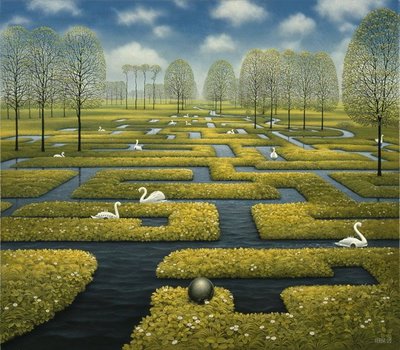
One of the first Doctor Who novelizations I ever read, years ago, was Terrance Dicks’ The Brain of Morbius, which begins with the crash-landing of an insectoid alien which belongs to a hivelike species. I still have the book.
Kriz came from a world where his insect-like species had evolved into the dominant race. Their deep-seated instincts for order, cooperation and selfless hard work had built a great civilization. Kriz, like all his people, existed only to serve the Race, which in turn was symbolized by the Nest and by the Great Mother, Goddess and Queen in one.
This was published in 1977, and it was the first time I’d encountered the concept of a hive mind. I found it utterly fascinating, and nearly cried when Kriz was decapitated on the very next page.
I didn’t think of writing about hive minds, though, until I read a post on New Adventures in Fantasy Fiction where Lee mentions that he’s thinking of having a hivemind in his work in progress, but is concerned that by making said hive mind evil would be a cliché. That started my brain ticking over.
Types of hive mind
There are two kinds of hive mind I’ve come across in speculative fiction. One is the kind where all are equal within the swarm or hive or collective, the other is where the group is more of an ant or termite colony with an individual being designated the queen/sole breeding female (or, much more rarely, the king or sole breeding male).
My preference for relatively mindness, animal-like hive species is the latter. Bees or naked mole rats or George R. R. Martin’s sandkings (from the brilliant novella of the same name) seem to function well with a division of labor. Queen, workers and soldiers.
On the other hand, when they’re sentient and humanoid species, I don’t really want to see a queen. For one thing, it’s difficult to have a humanoid queen maintaining the reproduction rate of her insectoid parallel. For another thing, there’s often a tendency to give the Queen a personality and have the protagonists interact with her – which means she becomes more of an individual. I like it when every creature in the hive has the same personality (or lack thereof), despite their different functions.
A great example of this is the Borg Queen of Star Trek: First Contact. I don’t really care if she’s a representation of the Borg that helps them interact with humans; she put a face on to the faceless Borg. And much of the fear of them was derived from that facelessness, their utter lack of individuality.
Good or evil?
If I were creating a hive mind I’d make them either neutral or good in some way, perhaps because of the Doctor Who book, where the hive mind is presented as a productive and moral species. Or maybe it’s just to go against the norm. Many societies these days value the rights of the individual highly, so an alien culture which does not do so (or one where are are no individuals) might well be seen as too different for us to peacefully coexist with.
Death swarms within this rocky wall,
Where all are one, one mind rules all.
Beneath the dead, the living strive
With mindless will to serve the Hive.
Emily Rodda, The Shifting Sands
If I went this route and made the hive mind an evil one – or at least a predatory amoral one, not necessarily the same thing – then I’d try to give them some aspect or ability or goal that distinguishes them. The Borg, when they first appeared in Star Trek: The Next Generation, were frightening because they didn’t want to kill people so much as to assimilate them.
“We are the Borg. Lower your shields and surrender your ships. We will add your biological and technological distinctiveness to our own. Your culture will adapt to service us. Resistance is futile.”
Star Trek: First Contact
Advantages and disadvantages
On the plus side, the creatures sharing a hive mind may be far less prone to neuroses and psychoses than those of us with more individuality. For instance, if someone with mental problems was assimilated by the Borg, the effects of this might be spread out through the Collective until they were diluted to the point of nonexistence, while the presence of so many other minds might have a calming effect on the newly assimilated Borg.
Creatures with a hive mind may also have access to a huge amount of information on which they’re able to draw at any given time. Imagine having your doctor’s knowledge of medicine or your accountant’s knowledge of bookkeeping, for instance.
What about disadvantages, though? One reason I didn’t like the ending of the film Reign of Fire was that by killing the one male dragon, the humans were able to knock out the entire species. Why don’t the dragons have a system similar to that of some insects, where the sole breeding female produces pheromones that inhibit the sexual development of others? That way, if she’s killed, the inhibitor is removed and a new queen (or king, in the dragons’ case) can develop.
“Hive mind” should not equal “evolutionary stupidity” or “evolutionary dead end”, for that matter. I really dislike stories where the hive is portrayed as inferior to individualism and humanity (unless the stories are called The Fountainhead or Atlas Shrugged). It’s a different system, that’s all.














